Lun Class Ekranoplan & related WIG
 The Pr.903 Lun Class WIG (Wings In Ground Effect vehicle) was a unique naval weapon. It is the only time anyone has combined a sea skimming Ground Effect aircraft with anti-ship missiles. It was one of the most distinctive, and least understood, naval weapons in Russian Navy’s line up. Impressively fast and heavily armed, the gigantic Lun Class WIG plane is a classic super weapon of the Cold War. In the 1980s the Soviet Union planned to built eight to take on U.S. Navy warships. But like so many ambitious Russian projects it was a victim of the end of the Cold War.
The Pr.903 Lun Class WIG (Wings In Ground Effect vehicle) was a unique naval weapon. It is the only time anyone has combined a sea skimming Ground Effect aircraft with anti-ship missiles. It was one of the most distinctive, and least understood, naval weapons in Russian Navy’s line up. Impressively fast and heavily armed, the gigantic Lun Class WIG plane is a classic super weapon of the Cold War. In the 1980s the Soviet Union planned to built eight to take on U.S. Navy warships. But like so many ambitious Russian projects it was a victim of the end of the Cold War.
Original illustration. CLICK for high-resolution image.

WIG craft, known as Ekranoplans in Russia, use an aerodynamic phenomenon known as ground effect. This is a cushion of air which forms between the wing and the ground during low-altitude flight. This greatly reduces drag, allowing the WIG to carry heavy loads over long distances, especially over water. The result is like a flying boat which flies very low and very fast.

The Lun class WIG was built in 1987 and entered service in 1989. NATO were watching closely and gave the vessel the reporting name UTKA Class. The project was expensive and only the first boat (the Russian Navy considered them boats not planes) was completed. A second was nearly completed. Despite this it can be viewed as one of a series of generally successful WIG, at least in relative terms. It was developed by Russian engineer R.E. Alekseev.
Its ‘Moskit’ supersonic missiles, known to NATO as the SS-N-22 Sunburn, made the Lun a formidable adversary. It was larger and faster than the Harpoon missile in service with the U.S. Navy. Flying at just 16-32 feet above the surface the plane would expect to detect a ship sized target at about 22 miles. For Moskit this would be almost point-blank range, giving the target minimal time to react.
But it was expected, by U.S. Intelligence at least, that several would operate together. One would go ahead, providing final target data to others which would remain behind the NATO warship’s radar horizon. The Moskit missiles had a range of about 60 miles and could be fired using the forward Ekranoplan’s target data. A three-ship formation could unleash 18 missiles at a target simultaneously, each one closing at 3 times the speed of sound (known as Mach 3).
The World's ONLY Guide to
Narco Submarines
10 years of research, analyzing over 160 incidents, condensed into a handy guide. This unique book systematically breaks down the types and families. With detailed taxonomy, recognition 3-views, profiles and photos. Available on Amazon
NATO considered the type a coastal defense asset, fulfilling the role similar to missile boats. But able to cover a much larger area and react more quickly to new threats. In the Russian Navy press release however it points to an anti-carrier role. It suggests that the Lun could use its high speed and stealth (due to its low altitude) to get close enough to launch its missiles.
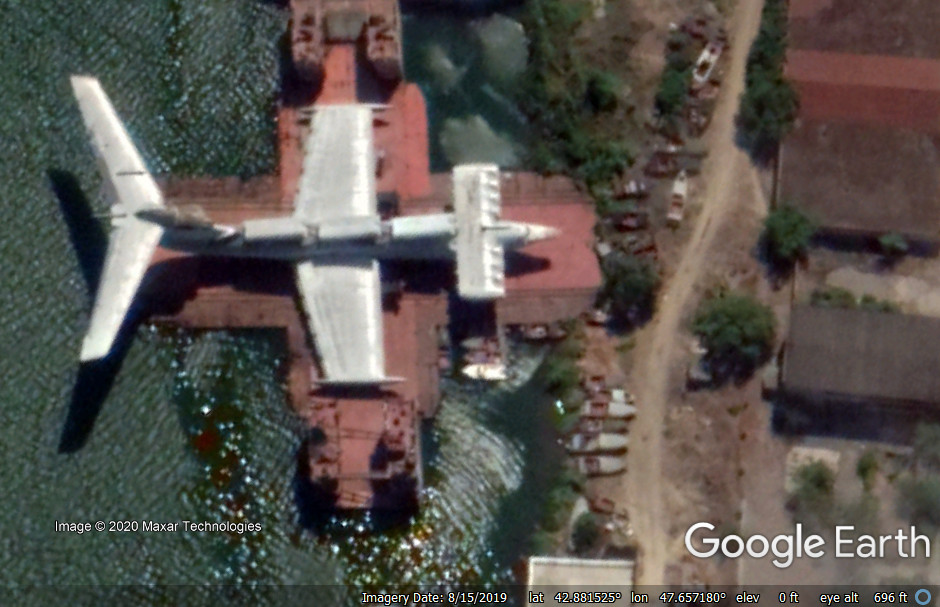
The Lun was not without its limitations however. It can be viewed as a large, expensive missile patrol boat. And greatly inferior to bombers such as the Tu-22 BACKFIRE. And it lacked the electronics reach of later patrol boats which had the Monolit-T targeting complex. Its targeting radar complex was not Monolithic or Mineral, so it looks like it was just a traditional radar. This makes sense as the Lun “flew” too high to use the evaporative or surface duct used by these more advanced radars. Thus by the time it was launched the Lun had an inherently more limited missile complex than the patrol boats then entering service.
Ekranoplan Timeline (Alekseev designs)
- 1961 (July 22) first flight of SM-1 ekranoplan designed by R.E. Alekseev. It was piloted by Alekseev himself. A single engine design with a maximum speed of about 200 kph (124 mph / 108 kt).
- 1962 Improved SM-2 model introduced. More stable, and introduces T-tail charactristic of Alekseev ekranoplans.
- 1962 SM-3 model tested. Iterative improvement.
- 1963 Twin engine SM-4
- 1963 SM-5 built. This was a smaller scale model of what would become the KM (aka Caspian Sea Monster)
- 1966 KM - Caspian Sea Monster. Giant jet powered test aircraft.
- 1972 SM-6 'Eaglet' flies. Twin lift jets in nose and a single turboprop in T-tail. Seen as sub-scale testbed for later Orlyonok transport Ekranoplan.
- 1972 First of 4 A-90 Orlyonok ekranoplans flown. Amphibious assault WIG.
- 1987 Lun Class ekranoplan flown.
SM-5
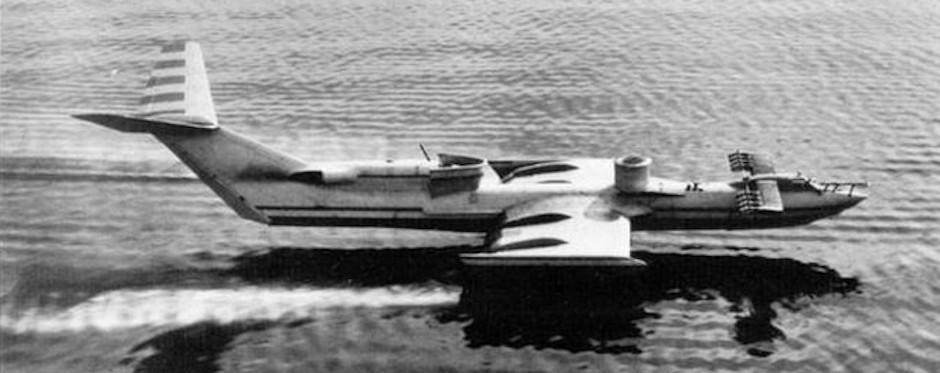
KM - Caspian Sea Monster
The KM was the largest and heaviest aircraft in the world from 1966 to 1988.
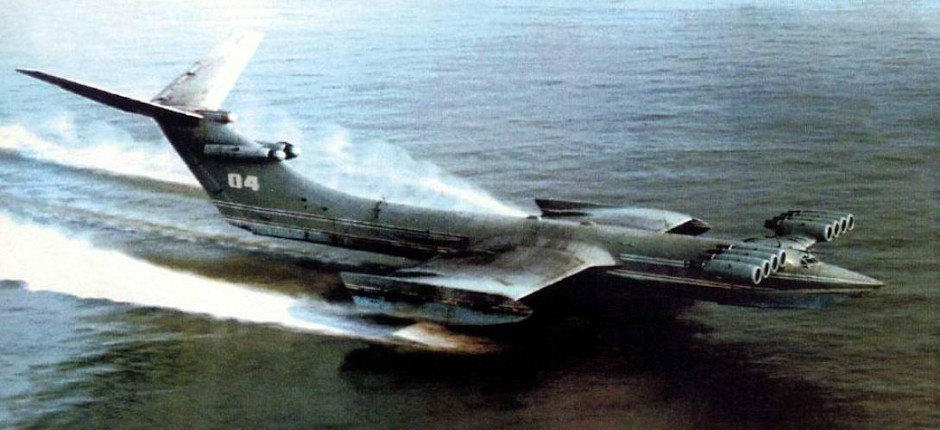
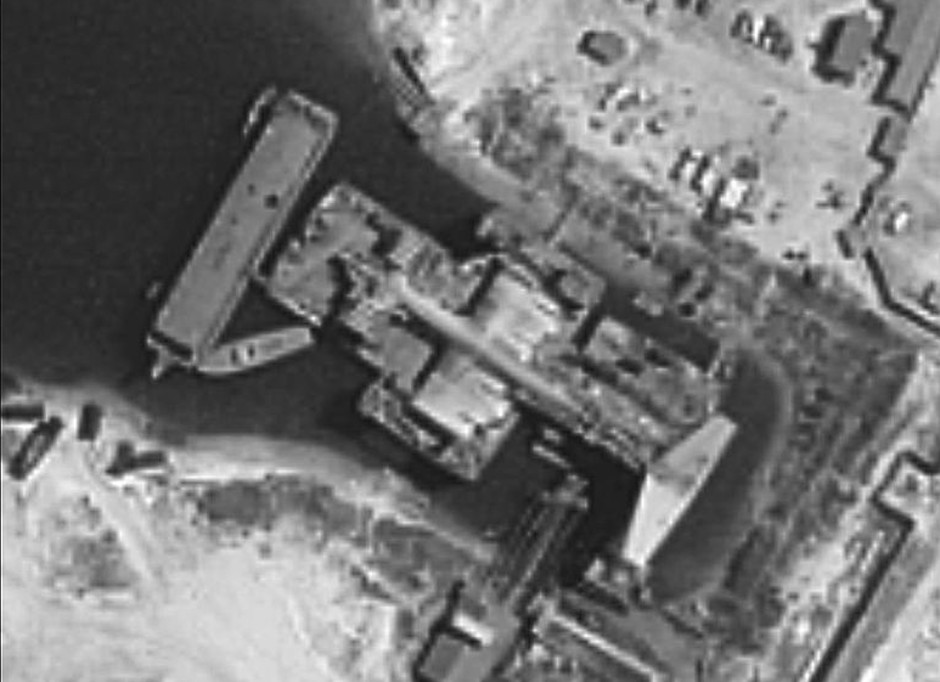
US KH-8 satellite image, reportedly from 1984
SM-6 'Eaglet'
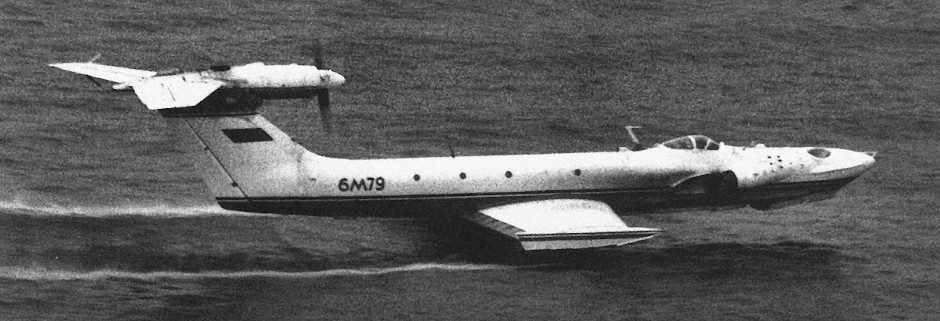
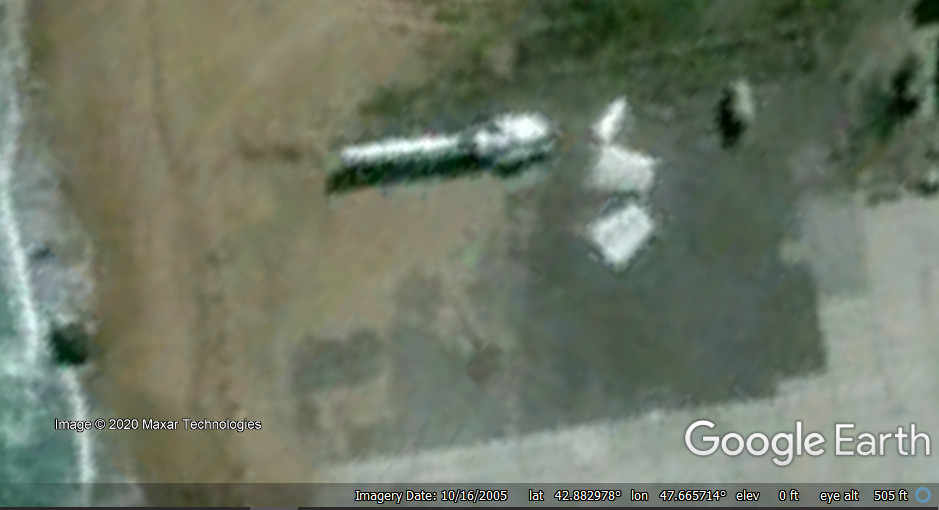
A-90 Orlyonok

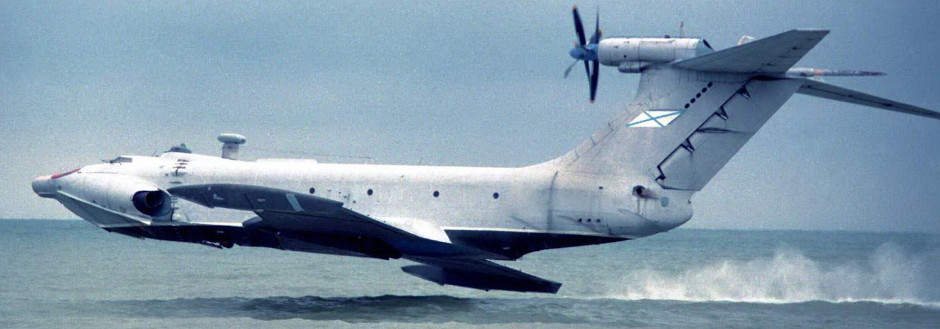

Get The essential guide to World Submarines
This Covert Shores Recognition Guide Covers over 80 classes of submarines including all types currently in service with World Navies.Check it out on Amazon
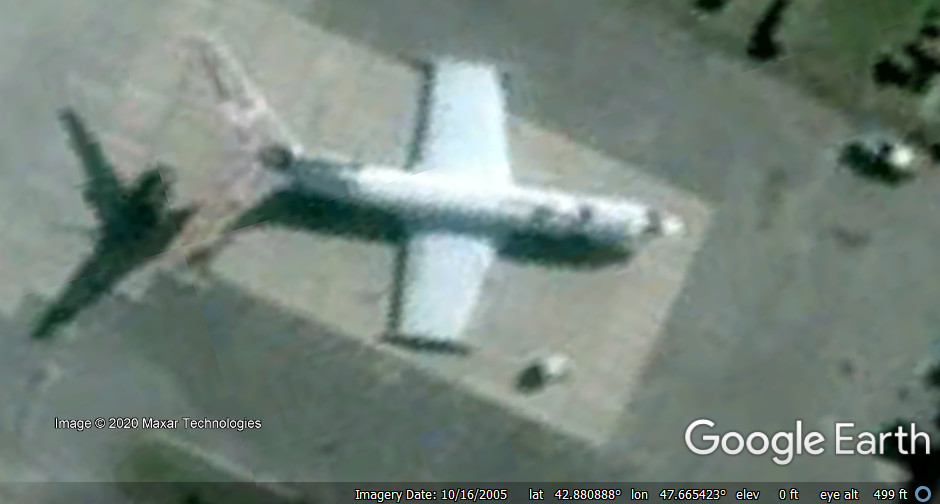

The ultimate book of Special Forces subs Covert Shores 2nd Edition is the ONLY world history of naval Special Forces, their missions and their specialist vehicles. SEALs, SBS, COMSUBIN, Sh-13, Spetsnaz, Kampfschwimmers, Commando Hubert, 4RR and many more.
Check it out on Amazon
Spasatel
“Spasatel” or “The Rescuer”. A second, unarmed version, was almost finished before the halt of production following the collapse of the U.S.S.R. This has been stored at the manufacturing site in Nizhny Novgorod, then known as Gorky. The town is in the middle of Russia but was an active ship building area during the Cold War. Ships, submarines and WIG built there reached the sea by river. The unfinished air frame has been stored in the open since mid-August 2016 with no sign of it moving. You can see it on map programs at 56°21'46.25"N, 43°52'43.92"E. It’s engines are covered and its wings and tail are stacked on its back.

More fascinating images at English Russia
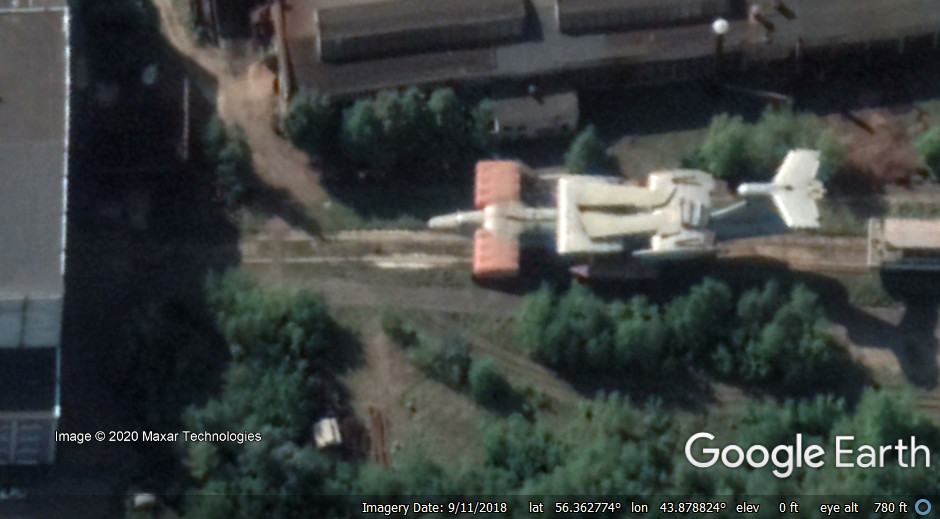
Fate
The Lun will be on display at Patriot park in Derbent on the Caspian Sea. It is the final chapter of a unique craft, but it will remain one of the great ‘what if’ questions of Cold War technology which never saw service.
Related articles (Full index of popular Covert Shores articles)

 Project 09852 Belgorod Special Mission submarine (spy sub). w/Cutaway
Project 09852 Belgorod Special Mission submarine (spy sub). w/Cutaway

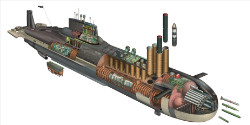 TYPHOON Class SSBN. w/Cutaway
TYPHOON Class SSBN. w/Cutaway

 Project 705 'ALFA' class attack submarine. w/Cutaway
Project 705 'ALFA' class attack submarine. w/Cutaway

 Poseidon Intercontinental Nuclear-Powered Nuclear-Armed Autonomous Torpedo, and countering it
Poseidon Intercontinental Nuclear-Powered Nuclear-Armed Autonomous Torpedo, and countering it

 Russian Navy Beluga whale
Russian Navy Beluga whale

 Prohibition era Moonshine smuggler's sub
Prohibition era Moonshine smuggler's sub
 The Escape of Bernd Boettger from East Germany
The Escape of Bernd Boettger from East Germany
 Nautilus 2020 Luxury Private Submarine. w/Cutaway
Nautilus 2020 Luxury Private Submarine. w/Cutaway
 Cutaway of Jules Verne’s Nautilus. w/Cutaway
Cutaway of Jules Verne’s Nautilus. w/Cutaway
 Turbinia, the first steam turbine boat (1894)
Turbinia, the first steam turbine boat (1894)
 Armored Stealth Boat used for car smuggling by Chinese organized crime. w/Cutaway
Armored Stealth Boat used for car smuggling by Chinese organized crime. w/Cutaway
 World Submarine Museum proposal
World Submarine Museum proposal






